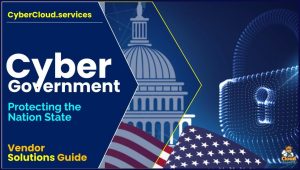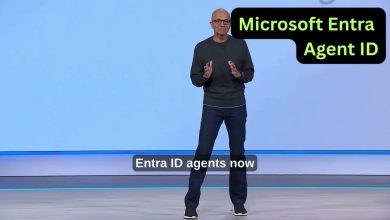Zero Trust Architecture for Government: Securing the Public Sector in a Digital Age
Zero Trust Architecture (ZTA) has emerged as a transformative cybersecurity paradigm, offering a robust framework to secure government systems by assuming no trust and verifying every access request.
 In today’s rapidly evolving cyberthreat landscape, government agencies face unprecedented challenges in safeguarding sensitive data, critical infrastructure, and public trust.
In today’s rapidly evolving cyberthreat landscape, government agencies face unprecedented challenges in safeguarding sensitive data, critical infrastructure, and public trust.
Traditional perimeter-based security models, which assume trust within network boundaries, are no longer sufficient against sophisticated adversaries like nation-state actors, ransomware gangs, and insider threats.
Zero Trust Architecture (ZTA) has emerged as a transformative cybersecurity paradigm, offering a robust framework to secure government systems by assuming no trust and verifying every access request.
This article explores the principles, implementation strategies, and benefits of Zero Trust for government agencies, with a focus on compliance with frameworks like FedRAMP, CMMC, and Microsoft 365 Government Community Cloud High (GCC High).
Understanding Zero Trust Architecture
Zero Trust is a security model that operates on the principle of “never trust, always verify.” It assumes that threats can exist both outside and inside the network, requiring continuous validation of every user, device, and application before granting access to resources.
The National Institute of Standards and Technology (NIST) outlines Zero Trust in SP 800-207 as a set of principles and technologies designed to reduce risk by enforcing granular, context-aware access controls.
Core Principles of Zero Trust
- Verify Explicitly: Authenticate and authorize every access request based on all available data points, including user identity, device health, location, and behavior.
- Least Privilege Access: Grant users and devices the minimum access necessary to perform their tasks, reducing the attack surface.
- Assume Breach: Operate as if the network is already compromised, using segmentation, encryption, and monitoring to limit lateral movement and contain threats.
- Continuous Monitoring: Implement real-time visibility and analytics to detect anomalies, respond to incidents, and adapt to evolving threats.
- Dynamic Policy Enforcement: Use risk-based policies that adjust access dynamically based on context, such as user role, data sensitivity, or threat intelligence.
For government agencies, Zero Trust aligns with mandates like Executive Order 14028 (May 2021), which emphasizes improving national cybersecurity, and the Cybersecurity and Infrastructure Security Agency’s (CISA) Zero Trust Maturity Model, guiding agencies toward advanced security postures.
Why Zero Trust Matters for Government
Government systems handle sensitive data, including Controlled Unclassified Information (CUI), Personally Identifiable Information (PII), and classified information, making them prime targets for cyberattacks. Recent incidents, such as the 2020 SolarWinds supply chain attack, underscore the vulnerabilities of traditional security models. Zero Trust addresses these challenges by:
- Protecting Sensitive Data: Ensures that CUI and other critical information, as defined by frameworks like the Cybersecurity Maturity Model Certification (CMMC), are accessible only to authorized entities.
- Enabling Cloud Adoption: Supports secure migration to cloud environments like Microsoft 365 GCC High, which complies with FedRAMP High and DoD Impact Level 5 (IL5) requirements.
- Mitigating Insider Threats: Verifies all users, including employees and contractors, reducing risks from compromised credentials or malicious insiders.
- Enhancing Remote Work Security: Secures distributed workforces, a necessity post-COVID-19, by validating devices and connections regardless of location.
- Meeting Compliance Requirements: Aligns with federal mandates, including NIST SP 800-53, CMMC, and the Department of Defense’s (DoD) Zero Trust Strategy, ensuring audit-ready systems.
Zero Trust Architecture is a cornerstone of modern government cybersecurity, enabling agencies to protect sensitive data, comply with stringent regulations, and embrace digital transformation.
By leveraging platforms like Microsoft 365 GCC High, which integrates Zero Trust principles with FedRAMP High and CMMC compliance, agencies can build secure, scalable, and efficient systems. As cyber threats grow in sophistication, adopting Zero Trust is not just a best practice—it’s a necessity for safeguarding the public sector’s mission-critical operations.
For guidance on implementing Zero Trust, agencies can consult CISA’s Zero Trust Maturity Model, NIST SP 800-207 or Microsoft’s GCC High.



